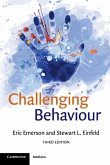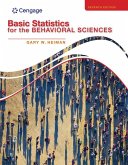Behavioral scientists - including those in psychology, infant and child development, education, animal behavior, marketing and usability studies - use many methods to measure behavior. Systematic observation is used to study relatively natural, spontaneous behavior as it unfolds sequentially in time. This book emphasizes digital means to record and code such behavior; while observational methods do not require them, they work better with them. Key topics include devising coding schemes, training observers and assessing reliability, as well as recording, representing and analyzing observational data. In clear and straightforward language, this book provides a thorough grounding in observational methods along with considerable practical advice. It describes standard conventions for sequential data and details how to perform sequential analysis with a computer program developed by the authors. The book is rich with examples of coding schemes and different approaches to sequential analysis, including both statistical and graphical means.
Hinweis: Dieser Artikel kann nur an eine deutsche Lieferadresse ausgeliefert werden.
Hinweis: Dieser Artikel kann nur an eine deutsche Lieferadresse ausgeliefert werden.
"...Bakeman and Quera's text is a useful reference guide for how to apply sequential analysis, with several examples of its actual use. It should be a useful guide to those sequential analysis researchers already applying such methods to their work but would have benefited from more discussion of when to apply such methods (to alert nonusers to its potential applicability to their work)..."
--Dr. David P. Nalbone, Purdue University Calumet, PsycCRITIQUES
--Dr. David P. Nalbone, Purdue University Calumet, PsycCRITIQUES








